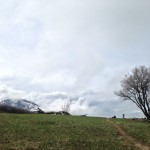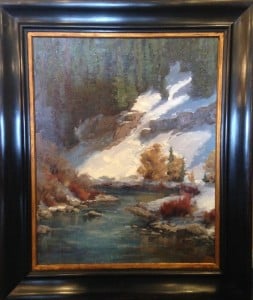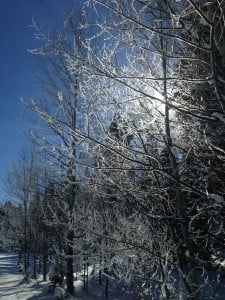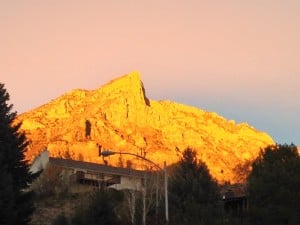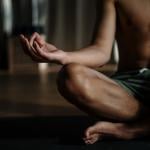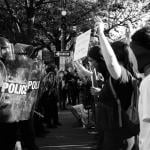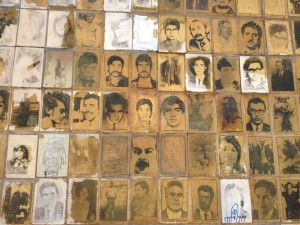
It has been an overwhelming week thus far, and it will be hard to summarize the extent of what I have learned and experienced. As I mentioned, I am here to research the context of the period of the dictatorship of Augusto Pinochet who governed Chile from 1973 until 1990. During this period, thousands of individuals were disappeared, executed, tortured, or forced into exile in order to silence political opposition from the left. At the conclusion of Pinochet’s rule, Chile entered a period of democratic opening, in which among other changes, the official story of Chile during this period began to change. I have traveled to Chile for research before, but for more academic projects, and this has usually meant lots of time in archives and libraries. I have instead needed more human contact to get a stronger sense of lived experience.
I am interested in this history because the protagonist of my novel is an LDS Chilean woman raised in Utah who in her 20s began to insist on knowing the story of her father who disappeared during that time and was presumably the reason why she and her mother left Chile when she was only four years old. Her passion to know the story of her father brings her back to Chile in 2002, just months after 9/11 and on the eve of Salt Lake’s Winter Olympics.
I imagine that she would have had many conversations with the Human Rights people who were established in Chile at that time working to rebuild the narrative of what had happened during the dictatorship. I imagine that she would have met people whose parents were disappeared, people whose stories would have profoundly changed her as she learned of that time. So I have been trying to meet people who have had these experiences, who lived through the dictatorship, and to visit sites such as Chile’s remarkable Museo de la Memoria y de los Derechos Humanos and the Parque de la Paz Villa Grimaldi, a site of imprisonment and torture that is now a memorial park.
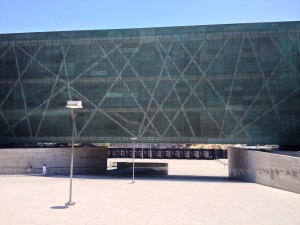
I have read accounts, watched interviews with survivors, spoken with individuals–both those with direct family stories about repressions and torture and disappearances and those who remained on the sidelines of the whole drama who do not seem to have considered the dictatorship a categorical moral failure.
I have tried to imagine the emotions of a woman raised without a father who is asked to imagine what might have been his terrible fate, a man she barely remembers and whose face was scarcely available to her in her upbringing. (I won’t divulge here all the reasons why nor what it is that she learns–you will just have to wait to see if I finish this novel!) Imagine too what this would mean to her as she reevaluates her own identity. Is it American? Was it ever? What will it mean to return to the US and raise an American family? Surely this is just one example of many new pioneer stories that do not fit any longer the traditional frame of the handcart story of Utah’s settlers.
What I find to be a particularly Mormon angle on this story are 1) what does it mean to be a Mormon in the context of political repression? What are our responsibilities to resist oppression? and 2) what responsibilities do Mormons have to turn their hearts to the fathers, especially those who have been erased from society by brutal violence? What recourses are available to us to keep such people close to us when their stories cannot be recovered? Of course, I am not merely interested in the Mormon angle on this, but I do think this Mormon-American theme poses some interesting questions about both Mormon and American culture, especially since Utah in 2002 was about to emerge into global consciousness and Mitt Romney was about to emerge in the national scene. The “Mormon moment,” as it is called, was being hatched at precisely that moment, even as the nation’s borders were tightening after 9/11, anti-immigrant fervor was rising, and the nation was becoming more selective about which stories could be considered “truly” American.
What is remarkable to me is how such violence could have been allowed in the first place. And then, how memory, fragile and attenuated as it is, can triumph over violent erasure. You can see here an Ombú tree that has stood in this location where people were tortured; it was a witness to violence that we can only imagine.  And this image from the same Partque de la Paz Villa Grimaldi, where thousands were tortured, we can see the names of the dead preserved in a memorial that includes fossils standing out in the rock wall, like a persistent memory that will not die.
And this image from the same Partque de la Paz Villa Grimaldi, where thousands were tortured, we can see the names of the dead preserved in a memorial that includes fossils standing out in the rock wall, like a persistent memory that will not die. 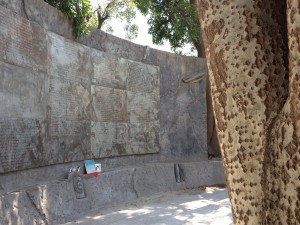 Some stories are well fleshed out, well documented; others are only available in the barest of details. You can see this tension visually demonstrated at the Muro de la Memoria, a memorial built under a bridge in Santiago where several dozen people were killed, including a priest. Their faces are visible, then others are hidden, and some are caught in between visibility and invisibility, liminal and uncanny ghosts who pressingly haunt the living in their abeyance.
Some stories are well fleshed out, well documented; others are only available in the barest of details. You can see this tension visually demonstrated at the Muro de la Memoria, a memorial built under a bridge in Santiago where several dozen people were killed, including a priest. Their faces are visible, then others are hidden, and some are caught in between visibility and invisibility, liminal and uncanny ghosts who pressingly haunt the living in their abeyance.
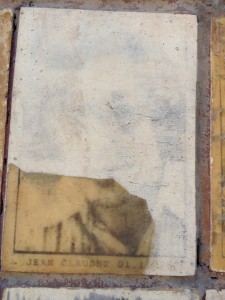
It seems art is indispensable in such moments, even if art must confess its own rhetorical stance as a stand-in for memories that cannot be unearthed (for those buried in mass graves in the deserts of Atacama for example) or “un-oceaned,” as it were, since so many of those killed were dropped into the sea via helicopter with heavy pieces of metal strapped to their bodies to prevent flotation.
Ultimately, it must be recognized that a documentable past is the privilege of a small minority of the human family. I say this not just because of the millions who have lived lives of quiet desperation in the context of centralized and brutalizing power, but also the vast majority of humanity who lived in extreme poverty or who lived before the very age of documentation for common people. It is the ultimate shame to be willfully ignorant of what has come before or to fail to record our lives, especially when so few have had our unprecedented freedom of expression or access to information about the past.


